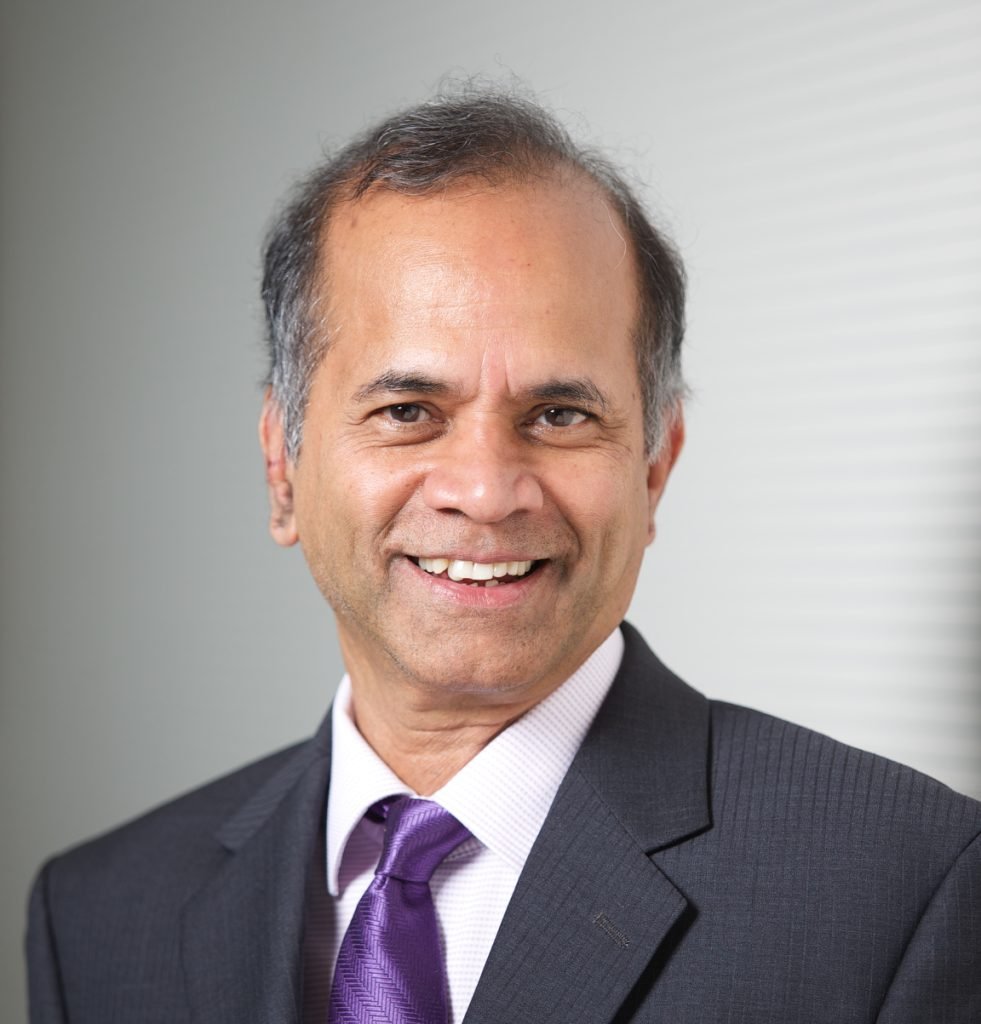
Rama Chellappa
BLOOMBERG DISTINGUISHED Professor
Primary Appointment: Department of Electrical and Computer Engineering and Department of Biomedical Engineering
Research Interests
Computer vision
- Markov random fields and extensions
- 3D modeling from a single image
- Structure from motion from videos
- Gait analysis
- Object/face/action detection and recognition
- Geolocation of images
- Semantic Forensics
Machine learning
- Generative adversarial learning
- Sparse representations and compressive sensing
- Shallow and deep learning
- Unsupervised domain adaptation/generalization
- Defending against adversarial attacks
Artificial intelligence
- Random forests
- Stochastic petri nets
- Non-monotonic reasoning
- Ontologies
- Bias mitigation and fairness
- Applications to medicine
Medical imaging
- Image reconstruction
- Image registration
- Applications of deep learning
Rama Chellappa is a Bloomberg Distinguished Professor in the Departments of Electrical and Computer Engineering and Biomedical Engineering at Johns Hopkins University (JHU). At JHU, he is also affiliated with MINDS, CIS and CLSP. He holds a non-tenure position as a College Park Professor in the ECE department at University of Maryland (UMD). Before coming to JHU in August 2020, he was a Distinguished University Professor, a Minta Martin Professor of Engineering, a Professor in the ECE department and the University of Maryland Institute Advanced Computer Studies at UMD. At UMD, he was also affiliated with the Center for Automation Research and the Department of Computer Science. From 1981-1991, he was an assistant and associate professor in the Department of EE-Systems at University of Southern California. He received the B.E. (Hons.) degree in Electronics and Communication Engineering from the University of Madras, India in 1975 and the M.E. (with Distinction) degree from the Indian Institute of Science, Bangalore, India in 1977. He received the M.S.E.E. and Ph.D. Degrees in Electrical Engineering from Purdue University, West Lafayette, IN, in 1978 and 1981 respectively. His current research interests are computer vision, machine learning, artificial intelligence, signal and image/video processing.
Chellappa received an NSF Presidential Young Investigator Award, four IBM Faculty Development Awards, an Excellence in Teaching Award from the School of Engineering at USC, and several paper awards from Biometrics and Pattern Recognition conferences. He is a recipient of the 2020 IEEE Jack S. Kilby Signal Processing Medal. He is also a recipient of the K.S. Fu Prize from the International Association of Pattern Recognition (IAPR). He received the Society, Technical Achievement and Meritorious Service Awards from the IEEE Signal Processing Society. He also received the Technical Achievement and Meritorious Service Awards from the IEEE Computer Society. Recently, he was recognized with the inaugural Leadership Award from the IEEE Biometrics Council. At UMD, he was elected as a Distinguished Faculty Research Fellow, as a Distinguished Scholar-Teacher, received three Outstanding Innovator Awards from the Office of Technology Commercialization, and an Outstanding GEMSTONE Mentor Award from the Honors College. He received the Outstanding Faculty Research Award and the Poole and Kent Teaching Award for Senior Faculty from the College of Engineering. In 2010, he was recognized as an Outstanding ECE by Purdue University. He also received the Distinguished Alumni Award from the Indian Institute of Science in 2016. He is a Fellow of IEEE, IAPR, OSA, AAAS, ACM and AAAI. He holds six patents.
Chellappa served as the Editor-in-Chief of IEEE Transactions on Pattern Analysis and Machine Intelligence. He has served as a General and Technical Program Chair for several IEEE international and national conferences and workshops. He is a Golden Core Member of the IEEE Computer Society and served as a Distinguished Lecturer of the IEEE Signal Processing Society. He served as the inaugural President of the IEEE Biometrics Council.
Research Interests
My research interests span computer vision, pattern recognition, machine learning and artificial intelligence. We integrate concepts from 3D geometry, illumination models, sensor physics, differential geometry, knowledge representation and reasoning methods, sparse and deep representations for addressing problems in these areas. In the area of computer vision, my group has worked on Markov random fields and extensions, recovering 3D structure from a single image, and from long sequences using discrete and continuous approaches, hyperspectral and radar image analysis. We are also interested in computer vision approaches to medicine. Specifically, we are interested in marker less motion capture methods and gait analysis with applications in diagnosing movement-related disorders. We have also developed registration methods that help electrophysiologists perform efficient ablation procedures. We are currently working on geolocation of images, media forensics and medical image reconstruction.
In the area of pattern recognition and machine learning, my group is working on many problems related to object/face/action detection and recognition from still images and videos. We use novel approaches based on shallow and deep representations to build robust end-to-end systems for face, expression, gesture, object and action detection and recognition. We are currently working on many current topics such as unsupervised domain adaptation, domain generalization, multi-task learning, learning from few samples, Generative Adversarial Networks (GANs) and defending attacks on machine learning algorithms and systems. We are also working on bias mitigation approaches for designing fair machine learning systems.
In the area of artificial intelligence, we have worked on topics such as knowledge representation, random forests, stochastic petri nets, non-monotonic reasoning and ontologies with potential applications in computer vision and medicine. We are currently working on the “deepfakes” problem and knowledge representation in deep learning networks.
At CLSP, I am looking forward to working with speech and language researchers on many problems that may benefit by integrating vision with speech and language. Audio and video can be fused for many applications such as person authentication, emotion recognition, defending AI system from adversarial attacks, and diagnosing cognitive impairments.


